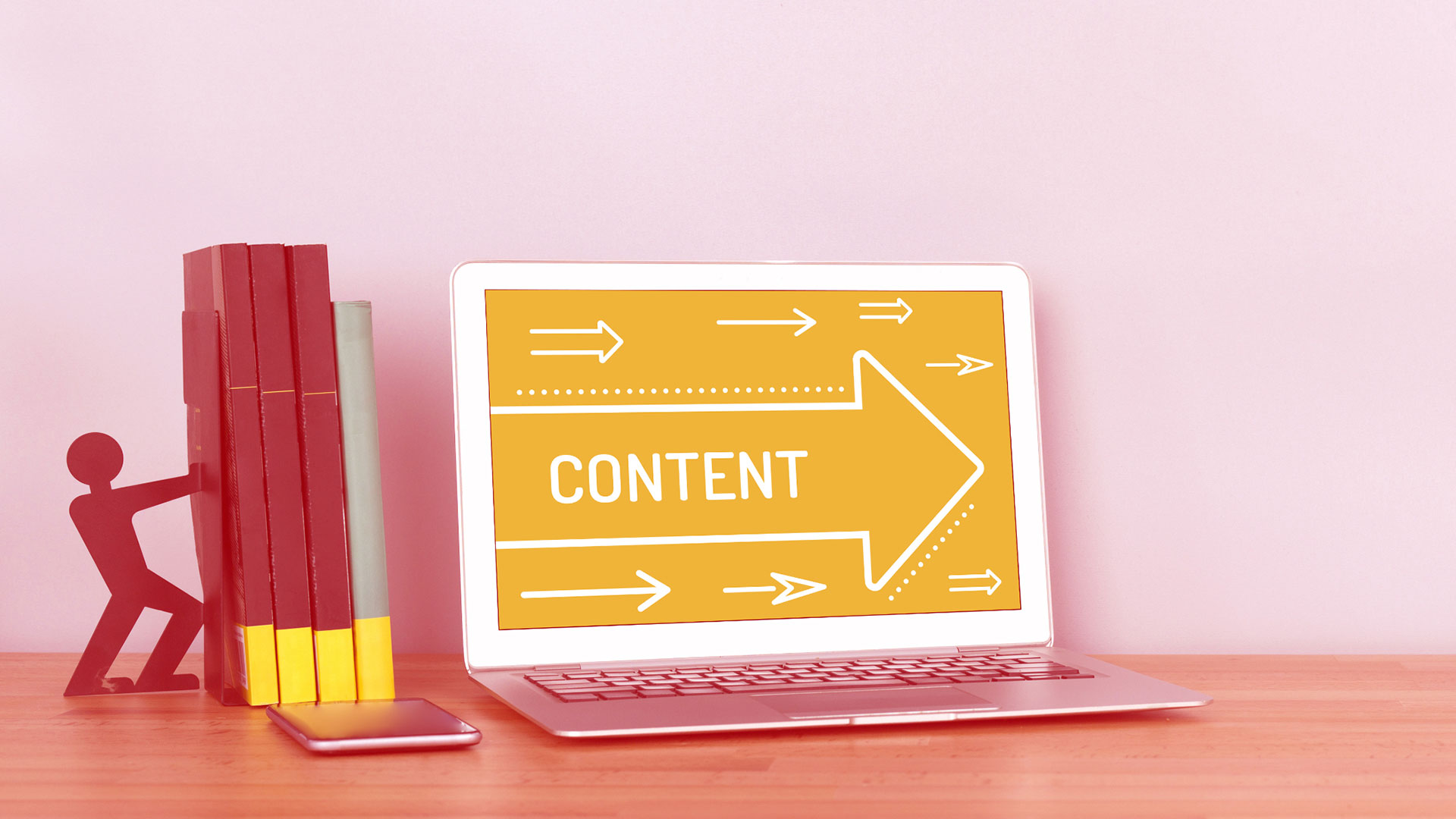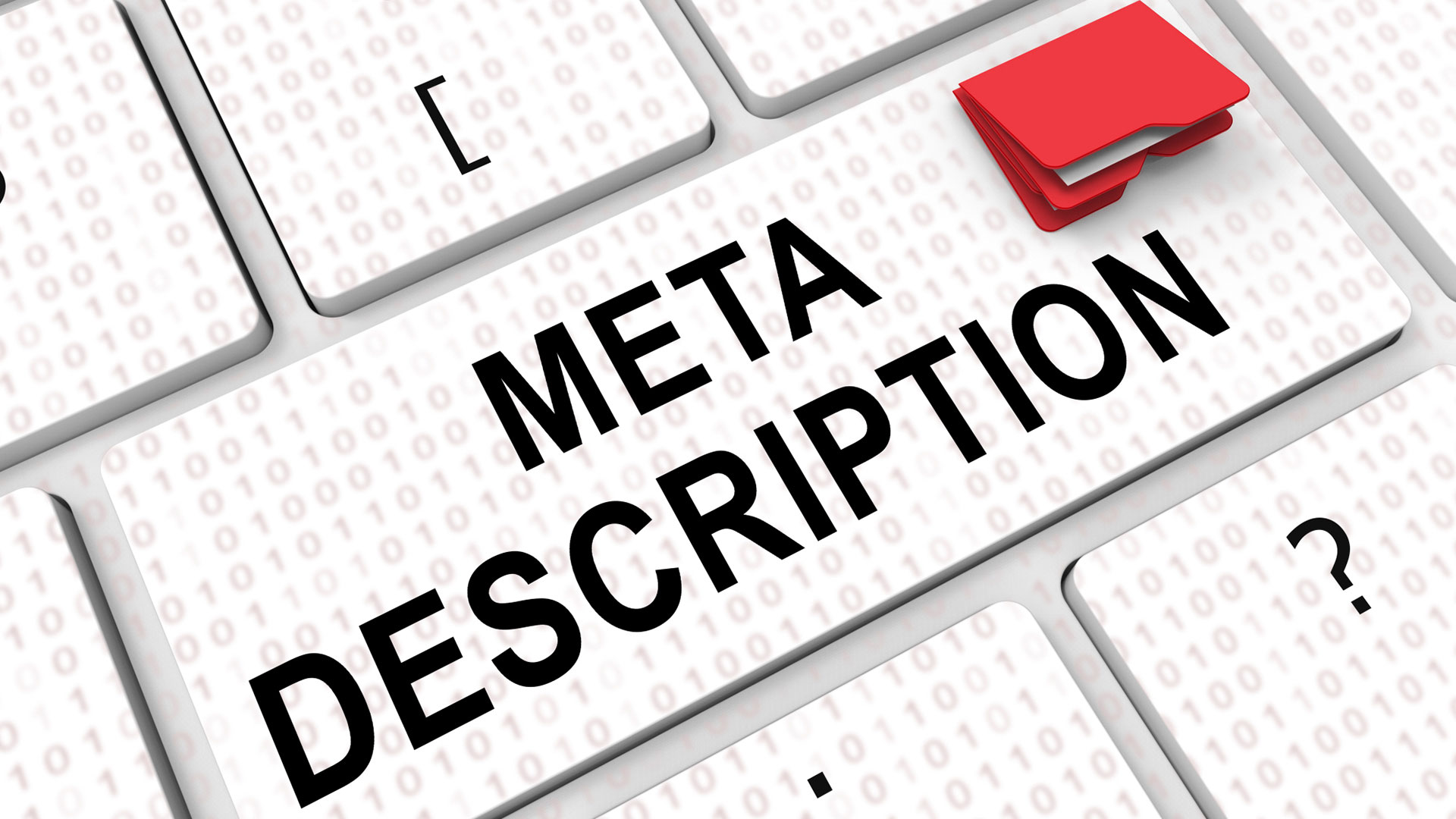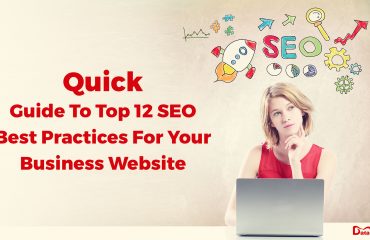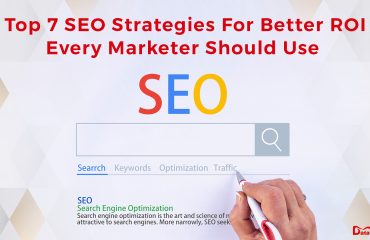
SEO in 2023 is no more a simple task of churning out content and cleverly pointing backlinks to it for gaining better SEO ranking.
Search engines, especially Google, have evolved rapidly lately. Google’s algorithms employ the power of machine learning and AI nowadays to ‘sense’ the user’s intent when a search query is made.
In order to rank first on SERP with an intelligent search engine keeping an eye on your website and its content, your SEO expertise better be up to the mark!

Merely embedding keywords in the body of the content won’t do to increase its visibility among users. So how does one ensure their website rank higher on the first page of SERP, garner more traffic and yield higher conversions?
In this article, we give you top 10 on-page SEO tips which you can implement on your website to reap great results with respect to site speed, user engagement, lead generation and conversions.
-
-
Create original content for the web pages
Optimizing your blogs’ content is perhaps the most straightforward and important SEO technique. No doubt, creating original content is time and effort intensive but you want to do it for two reasons.
One, search engines have a sort of affinity towards granting an original content a good SEO ranking.
Two, copied content is bound to get identified by website visitors sooner or later. The original owner of that content can sue for infringement of copyrights under the DMCA (Digital Millennium Copyright Act), a 1998 US law that penalizes attempts to infringe on a copyrighted work. At the least, your website can be taken down.
Even if you’ve outsourced the content writing, ensure the content is not plagiarized (or a spun content) with the help of plagiarism checker tools.

-
Keep the content’s form long and detailed
There was a time when it was possible to rank highly with 600-800 words long content, keywords included in it. Not so anymore.
Nowadays, content that is around 2000 words long and provides in-depth information on the subject matter gets shared faster, fetches higher backlinks as reference and claims improved rankings.

-
Include many LSI keywords in the content
LSI (latent semantic index) keywords are those keywords that are related to the main keywords in some logical way.
Such words help Google’s core algorithms (like the machine learning powered RankBrain) to make sense of your web page.For instance, when you are writing about the sport ‘golf’ and include LSI keywords like ’18-hole course’, ‘backspin’, ‘ace’, ‘tiger woods’, ‘double eagle’, ‘bogey’ etc., Google clearly understands the context through these LSI keywords supplied by you and ranks the web page for golf related searches.

-
Better on-page SEO with an optimal keyword placement strategy
Body headings improve the readability of your content. Without disturbing the overall content structure and flow, use a target keyword at least once in the H1, H2 and H3 tags (don’t overdo it though).
It makes the content rich and also enables the search engines crawlers to differentiate what is relevant and determine the headings for showing in SERPs.
Further, it is advisable to use some of the target keywords in the first 100 or 150 words of the content in a natural manner. Needless to say, the title of the article should have a target keyword too.
Plan in advance to sprinkle the LSI and actual keywords throughout the span of the content while maintaining a consistent keyword density.

-
Optimize the meta description and page title
Meta description is an HTML attribute that summarizes the content in SERPs. On-page SEO is just incomplete without optimizing for the meta keywords i.e. a target keyword must find its place in the meta description.
But note that Google displays a truncated snippet (around 160 characters long) of your meta description. So, ensure creating a commensurate meta description starting with a target keyword.
Using modifiers like ‘Top 7’, ‘Best’, ‘Guide to’ etc. in the description can significantly boost the CTR in SERPs.
Meta title is what is displayed to the visitors in the search and page title is the blog post’s title, an excellent example of H1 tag. Page titles are by default the H1 tag of a post. This implies there shouldn’t be another H1 tag in the content apart from its heading tag.Also, Google displays only 71 characters in the site title, the rest getting truncated. So, you must ensure that the page title, with a keyword in it, is complete in matching users’ search intent. Google doesn’t use meta keywords as a ranking factor (Bing does) but it does use meta description to generate a preview for search.

-
Optimization of multimedia (images and videos) through title, alt tag & description
Using visually appealing, relevant, trendy and SEO friendly multimedia within the content is the best way to keep the audience hooked to your content for longer times, thereby increasing the site dwell time and reducing the bounce rate. Visual media also helps boost the user-interaction signals that Google tracks.
Unfortunately, optimizing images for search is perhaps the most underused on-page SEO technique.
For starters, rename the image (e.g. ‘123.jpg’) to a more relevant name (like ‘marketing_plan.jpg’). Even better, the image’s name must have target keyword (e.g. SEO_Tips.jpg, Marketing_trends_2023.jpg etc.).
Use the main keyword in the alt tag. Alt text serves as a placeholder for an image/video that fails to load for some reason.
Also, use captions laced with target keywords. Tools like WordPress give provisions to add title, caption and alt text when an image is uploaded.
Lighter images don’t impact the page load time significantly. If you’re uploading heavy screenshots, use an image size compression tool which doesn’t affect the image quality.
As per the keywords used in the multimedia, Google displays your multimedia content to the relevant audience, giving you more traffic and higher ranking.

-
Short, SEO friendly URLs extensions are great
SEO friendly URLs have target keywords embedded in them to be found easily by the search engine crawlers when a user searches for your content.
For instance, from SEO point of view, the URL ‘www.urlexample.com/on-page-seo-tips’ is far better than ‘www.urlexample.com/p=34/this-is-some-super-long-website-url-here’.

-
Using outbound links in your SEO content
You can hyperlink a target keyword (say, ‘search market growth’) to an external website (of, say, Harvard Business Review) that has valid information supporting your stand in your blog.
Such outbound links add credibility to your website. The users take your content seriously and engage for longer.
Search engines take your site as a reliable source of information since you are providing good content backed by credible resources linked to it.
Furthermore, outbound links enable the search engines to get an idea of your blog niche and prioritize your website over others.

-
Pay attention to branding and conversion optimization
Blog’s appearance is the first thing a user will notice after clicking the link to your content in SERP.
A standard looking content with clean presentation, appropriate lightweight & responsive theme and enough white spaces for reading comfortably will make the users stick around.
Furthermore, a branded look adds formality and authority to your website and has potential to prompt conversions. Mobile responsiveness nudges Google to rank your website higher.

-
Keep user experience in mind during On-page SEO
On-page SEO isn’t just about fine-tuning the web pages for search engine crawlers. You’re running a website to accomplish business goals by fulfilling users’ needs.
The dwell time of users on your website increases when they find your content useful. A high-quality content turns a one-time user into a recurring one and eventually into a customer.
Such a content is referenced by other websites and shared by users across the social media platforms as well.
Quick TTL (time to load) of the web pages (owing to caching, light images & themes, faster web hosting, absence of redundant widgets), redirection (or resolution) for 3xx and 4xx broken links, decrease in the bounce rate & a visually appealing website – all contribute to better rankings and help garner organic traffic.

-
Why do On-Page SEO?
- Search engine optimized web pages can funnel more organic traffic to a website. This is not only vital but also highly desirable for any business (from bloggers, small businesses to freelancers and giants like Apple) investing in SEO.
- More than 70% of the online users do not visit the second page of SERPs. In fact, the second page is called, in lighter vein, the graveyard of inefficient websites. This makes it all the more imperative for businesses to gain higher SERP rankings and hence, enter on-page SEO.
- On-page SEO focuses on UX considerably. Better UX means better ranking which in turn translates to a potential increase in the number of leads and better chances of conversions.
- Google holds an astounding 78.01% of the search market share (followed by Baidu, Bing and Yahoo, in that order). Any online business just can’t afford to not optimize their website for Google in order to acquire as much quantum of the search clicks as possible.
Typically, SEOs take anywhere from 1 year to 1.5 years as a realistic timeline to yield significant results. However our team of SEO experts at Datawave, an SEO company in Hong Kong, has experience of consistently managing to improve the ranking and website traffic within 6 months of commencement of SEO.
Our SEO team is adept at:
- Fine-tuning web pages for load speed
- Handling redirections
- Gauging mobile responsiveness
- Title tags & alt attribute
- Open Graph in meta tags,
- Canonical tags, rich snippets, back links etc.
so that search engine algorithms can ‘sense’ your content, its relevance and who that content should be pushed to.
For more information, feel free to reach out to Datawave.












